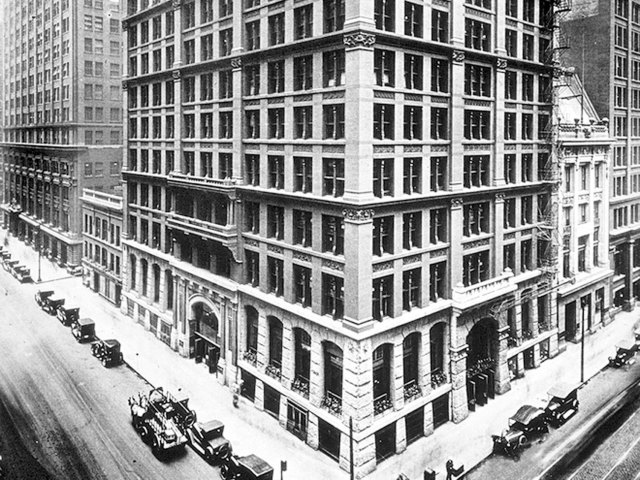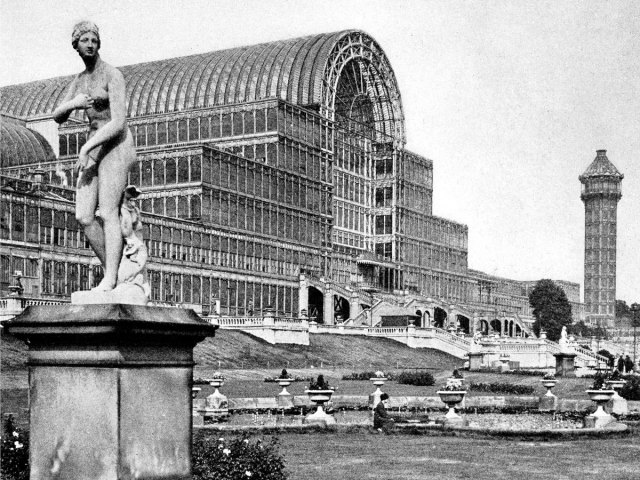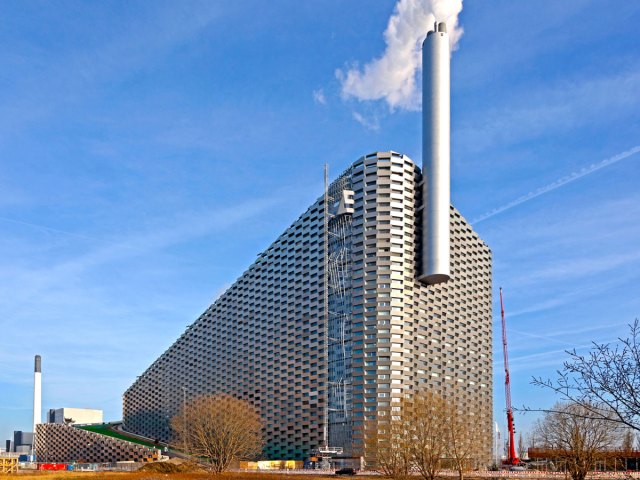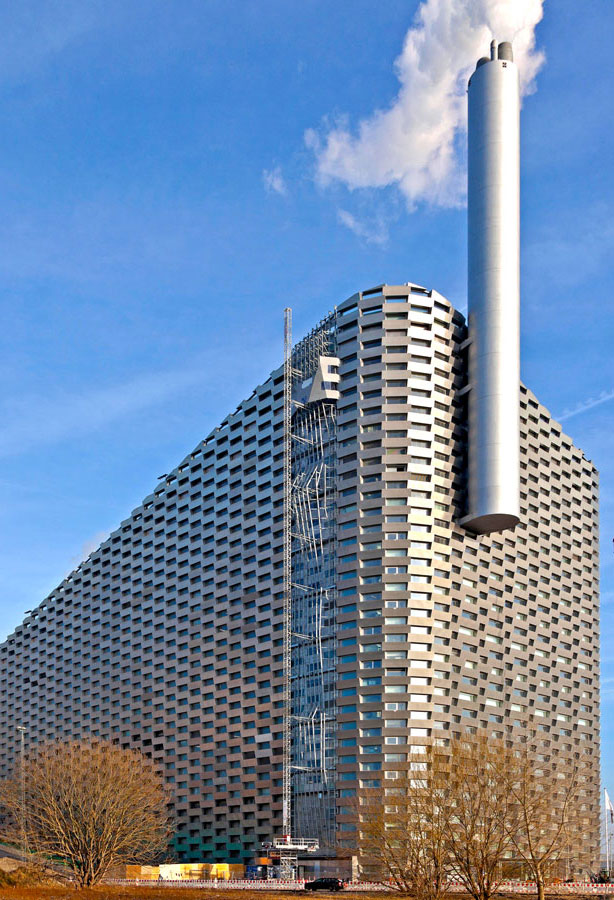Much of the modern architecture we see today builds upon the past — both figuratively and literally. But whether because of their exceptional design or the cutting-edge methods used in their construction, there are also a handful of individual buildings throughout the world that have played a pivotal role in transforming what humans build and how we build it. Here are seven standout buildings that are influential buildings in architecture.
Home Insurance Building – Chicago, Illinois

The Home Insurance Building, which stood in Chicago from 1884 to 1931, is widely considered to be the world’s first modern skyscraper. In an usual move, architect and engineer William Le Baron Jenney proposed using an iron frame, which would allow him to reach a greater height than if he used the conventional building methods of the time. And, unlike masonry structures, his building would also weigh less.
However, Jenney had to temporarily pause the project to persuade nervous officials that this new building type would remain sturdy. The delay enabled him to be sold on the benefits of steel over iron, which he sourced from the Carnegie-Phipps Steel Company of Pittsburgh and incorporated into his final design. Initially, the office building had 10 floors — the most of any building at the time. An additional two stories were added a few years later, raising it to 180 feet tall. Though the Home Insurance Building was sadly demolished in 1931, Jenney’s groundbreaking technique revolutionized the modern cityscape — not just in Chicago, but the world over.
Parthenon of Athens – Greece

The Parthenon was built on the Acropolis of Athens in the fifth century BCE. While the temple, dedicated to the goddess Athena, is now a ruin, its iconic status is undiminished. The architecture of the ancient Greeks had a huge influence on building design over the centuries, and the Parthenon itself has had a particularly strong influence.
Its mathematically perfect proportions and symmetry have underpinned the design of many buildings across the world, even those that are iconic in their own right — such as Le Corbusier’s Modernist classic, Villa Savoye in France. In the U.S., you might recognize the similarities to the columns used in the Lincoln Memorial in Washington, D.C; the Federal Hall in New York City; and the Tennessee State Capitol in Nashville.
Great Pyramid of Giza – Egypt

At the time it was built around 2560 BCE, the Great Pyramid of Giza was (and still is) a feat of engineering. The only remaining landmark of the Seven Wonders of Ancient World, it originally measured 481 feet high — becoming the tallest building in the world and remaining so until Lincoln Cathedral was completed in the early 14th century.
The pioneering construction of the Great Pyramid, while remarkable, remains somewhat of a mystery — exactly how did the Ancient Egyptians move and maneuver such large quantities of building materials with the tools available to them at the time? Khufu’s final resting place may also have provided the inspiration for other pyramid constructions across the world, from Mexico and Central America to Asian nations such as Cambodia, Thailand, and Indonesia.
Hagia Sophia – Istanbul, Turkey

The Hagia Sophia was built in what’s now Istanbul in the sixth century. The landmark building began life as a church and was later converted into a mosque, a museum, and a mosque once again in 2020. One of the Hagia Sophia’s most impressive architectural features is its domed roof, which features four pendentives — triangular segments which connect the dome to the walls to support its weight. When the Ottoman Turks captured the city in the 15th century, they added features such as minarets and replaced Christian ornamentation with Islamic decoration, but the dome was retained.
The Hagia Sophia’s architectural influence is evident in other religious buildings in Istanbul, such as the Blue Mosque, completed in the early 17th century. But it is perhaps the building’s versatility when it comes to culture and religion which is its true contribution to the history of architecture.
Basilica of Saint-Denis – France

The Basilica of Saint-Denis, a commune in the northern Paris suburbs, is considered one of the earliest examples of Gothic architecture. The earliest parts of the basilica date from the 12th century and were built under the supervision of Abbot Suger, a close confidant of the French kings Louis VI and Louis VII. The Basilica of Saint-Denis was the first to feature all the elements of this centuries-old European style, including rib vaults, pointed arches, and flying buttresses.
As Gothic architecture evolved, the Basilica of Saint-Denis paved the way for countless other religious buildings to be constructed or renovated in the iconic style, such as the Notre-Dame de Paris and the towering cathedrals of other European cities such as Chartres, Reims, Cologne, and Milan.
Crystal Palace – London, England

The enormous Crystal Palace was erected for the Great Exhibition of 1851 in Hyde Park. Epitomizing Victorian ingenuity and ambition, Joseph Paxton’s design featured nearly 300,000 panes of glazed sheet glass and a skeletal structure made largely out of cast iron. The exhibition hall had a floor area totaling 990,000 square feet. After the world’s fair, it was taken apart and moved south of the River Thames. and with an altered design, its new barrel-vaulted roof reflected the Beaux-Arts style.
Sadly, the Crystal Palace was destroyed by fire in 1936, just like several of the buildings it inspired, including one built in New York’s Bryant Park in 1853 and others in Montreal, Munich, and Amsterdam. A few others survive, such as the Aberdeen Pavilion in Ottawa, Canada, and the much more recently built Infomart in Dallas, Texas. In addition, the legacy of this landmark still lives on in the U.K., as the area in which it once stood in southeast London has been known as Crystal Palace for more than 80 years.
Amager Bakke – Copenhagen, Denmark

The buildings that will influence and inform the future of architecture from this point in history are likely to be multi-functional spaces with sustainability as their core principle. In that sense, history has already been made with the construction of buildings such as Amager Bakke in the Danish capital, Copenhagen.
Opened in 2017, it is primarily a waste-to-energy plant, burning the city’s trash to create power and help Copenhagen make the transition to zero carbon. However, Amager Bakke — or CopenHill, as locals call it — also plays a significant role in providing recreational opportunities. The building itself features the world’s tallest climbing wall and is topped with trails for hiking and running, fitness equipment, and even a dry ski slope. Designers Bjarke Ingels Group (BIG) call their concept “hedonistic sustainability” and claim it is the “single largest environmental initiative in Denmark.”
More from our network
Daily Passport is part of Inbox Studio, which publishes content that uplifts, informs, and inspires.
















